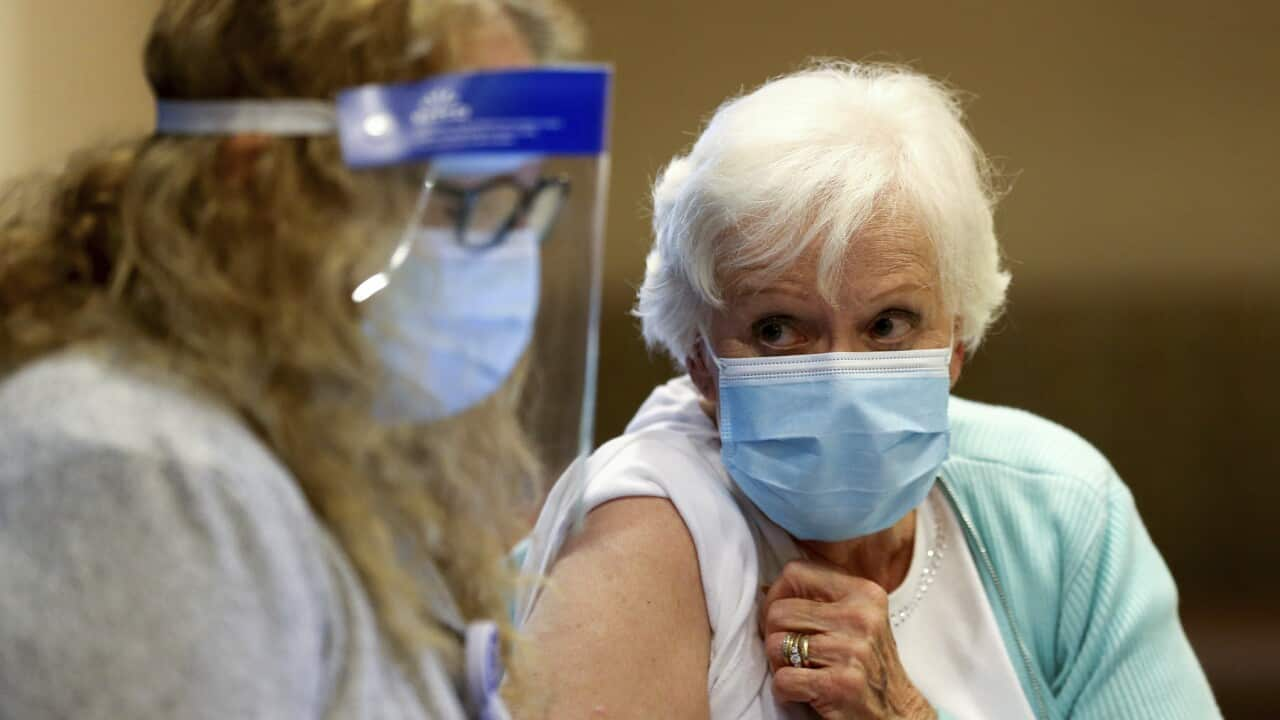Highlights
- COVID-19 vaccine national roll-out strategy identifies priority populations for vaccination, and the phases in which vaccines will be provided
- The rollout plan is all dependent on Australia's Therapeutic Goods Administration
- TGA has also granted a provisional determination to Oxford/AstraZeneca vaccine
With the Pfizer/BioNTech vaccine now approved for use, Australia will begin vaccinating some of its most vulnerable populations against COVID-19 around late February.
But getting vaccinated won't be as simple as showing up to the doctor and getting a shot.
The vaccine rollout will happen in five priority stages.
The first group will be Australia's quarantine and border workers, aged and disability care staff and residents, plus priority frontline healthcare workers.
Next up will be people over the age of 70, other healthcare workers, Aboriginal and Torres Strait Islander people over the age of 55, younger adults with underlying medical conditions or disabilities, and critical, high-risk workers like emergency services.
The third group will include adults aged 50 to 69, all Aboriginal and Torres Strait Islander adults, and other critical, high-risk workers.
Stage four will be the largest group - the remainder of Australia’s adult population.
The final group will be children under the age of 16, although they will only be inoculated if medical advice suggests it's warranted.
Where are the shots administered from?
This all depends on when the vaccination occurs.
Those who fall into the first two priority groups will be vaccinated at 50 hospitals across metropolitan and regional Australia.
People living or working in residential aged care and disability care facilities will also be able to get vaccinated on site.
After those first two stages are finished and vaccines become available to a much broader section of society, another 1000 locations will be added to the list.
That will include places like your local GP, respiratory clinics, dedicated vaccination clinics, community pharmacies and Aboriginal health services.
Vaccine approval
This rollout plan is all dependent on Australia's Therapeutic Goods Administration approving Australia's chosen vaccine candidates.
The T-G-A approved its first vaccine - the Pfizer/BioNTech shot - on Monday ((25 Jan)), almost two months after it was approved for use in the US and UK.
Australia has also signed up for the Oxford/AstraZeneca and Novavax vaccines, but they are yet to be approved.
So why is Australia's vaccine approval process taking longer than other countries'?
Burnet Institute epidemiologist Professor Mike Toole says Australia has the luxury of being incredibly thorough with its approval process thanks to its very low case rate.
The TGA has also granted a provisional determination to Oxford/AstraZeneca, as they did for Pfizer/BioNTech before its vaccine was approved.
A provisional determination is the first step in the approval process, but doesn’t necessarily mean the vaccine will ultimately be approved.
This allows the TGA to get a head start on going through clinical data from the various stages of trials from those vaccine manufacturers.
At the same time, the TGA says it is “actively monitoring” the efficacy and safety of these vaccines as they are rolled out in other countries first.




